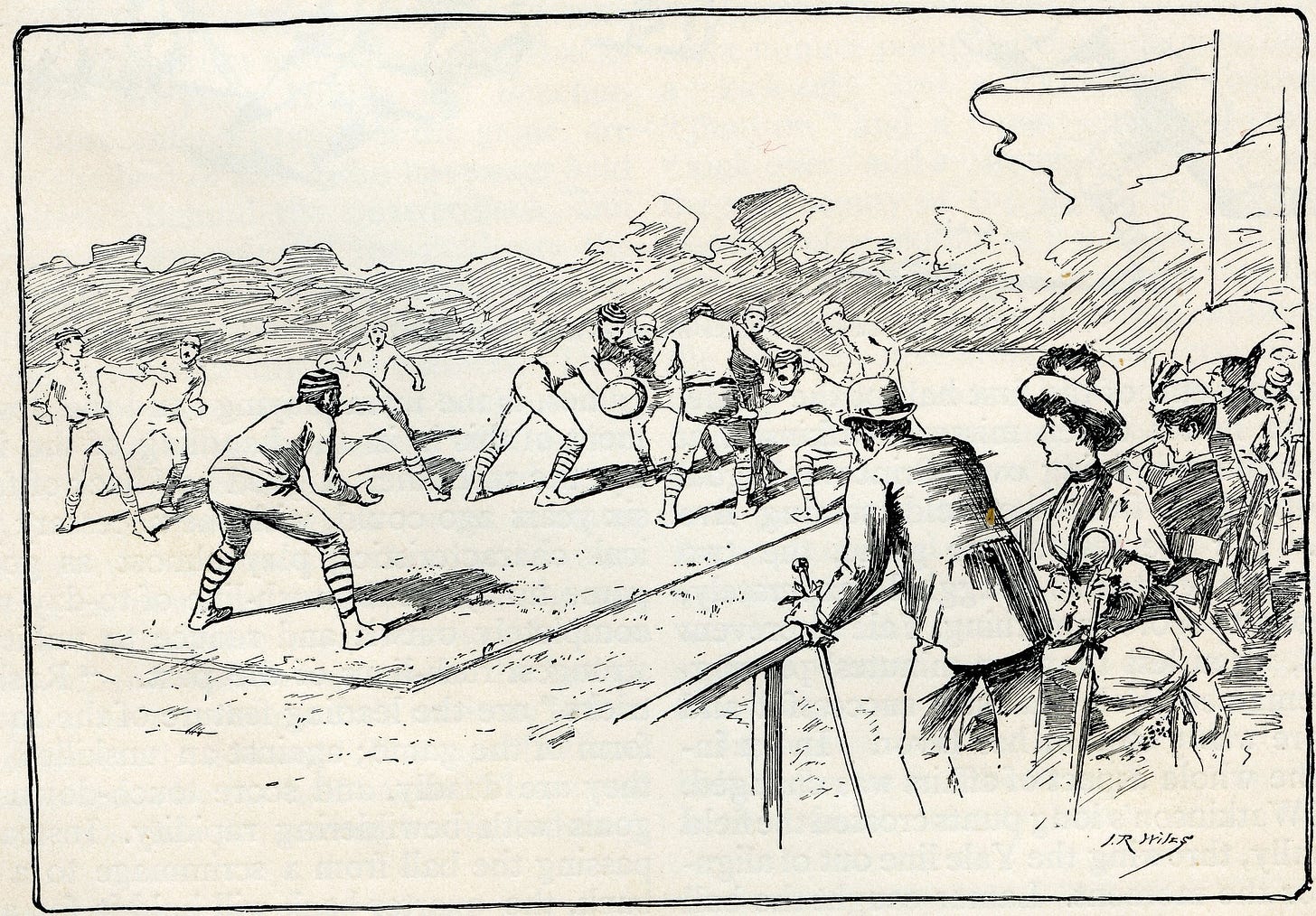Today's Tidbit… IFA Rule #32 Inbounding
This is #32 in a series covering football's original 61 rules adopted by the Intercollegiate Football Association in 1876. We review one rule each Friday.
Options for inbounding the ball are not something that comes to mind when we think about football, and yet, early football had five options for bringing the ball back into play after it went out of bounds. Rule 32 names those options and describes the procedures for some of them.
Rule 32: He must then himself, or by one of his own side, either bound the ball into the field of play and then run with it, kick it, or throw it back to his own side; or throw it out at right angles to the touch-line; or walk it with it at right angles to the touch-line any distance not less than five nor more than fifteen yards, and there put it down, first declaring how far he intends to walk out.
For each of the five options, the inbounder returned to the spot the ball went out of bounds, touched the ball down on the field of play while standing out of bounds, and then used one of the five procedures.
The first option was to put the ball in play by entering the field of play and running or lateraling the ball.
The second method was throwing the ball to a teammate onside (farther from the opponent's goal than the inbounder). The teammate that received the ball could run or punt the ball.

The third option was a "fair," which involved throwing the ball onto the field at a right angle from the sideline and between the two teams lined up across from one another. (The fair or "line out" remains part of rugby today.)
The rule-makers eliminated the first three options in 1894.
The fourth option was an uncontested punt from out of bounds. Like the puntout following a touchdown, this involved a punt from out of bounds, but either team could recover the kicked ball. This option was eliminated in 1904, leaving only the fifth option.
The fifth option allowed the player to walk the ball onto the field and place it five to fifteen yards from the sideline after announcing how far from the sideline he planned to walk in. The offensive team then ran a play from scrimmage. The rules changed several times regarding the distance the player could walk the ball, and this option went away with the introduction of hash marks in 1933.
Click the appropriate link for previous stories in the series: Intro | #1 Drop Kick | #2 Place Kick | #3 Punt | #4 Goal Posts | #5 Goal | #6 Goal ≠ Punt | #7 Scoring | #8 Dead Ball | #9 Touchdown | #10 Tackle | #11 Scrimmage | #12 Ball Handling | #13 Dead Ball | #14 Scrimmage Ball Handling | #15 Run In | #16 Goal Line | #17 Boundary Lines | #18 Crying “Down” | #19 Maul In | #20 Maul in Pax | #21 Touch-in Goal | #22 Onside | #23 Offside | #24 Return to Onside | #25 Defensive Offside | #26 Throwing Back | #27 Knocking On | #28 Fair Catch | #29 Punt-out | #30 Punt-On | #31 Into Touch
Football Archaeology is reader-supported. Click here to buy one of my books or otherwise support the site.


